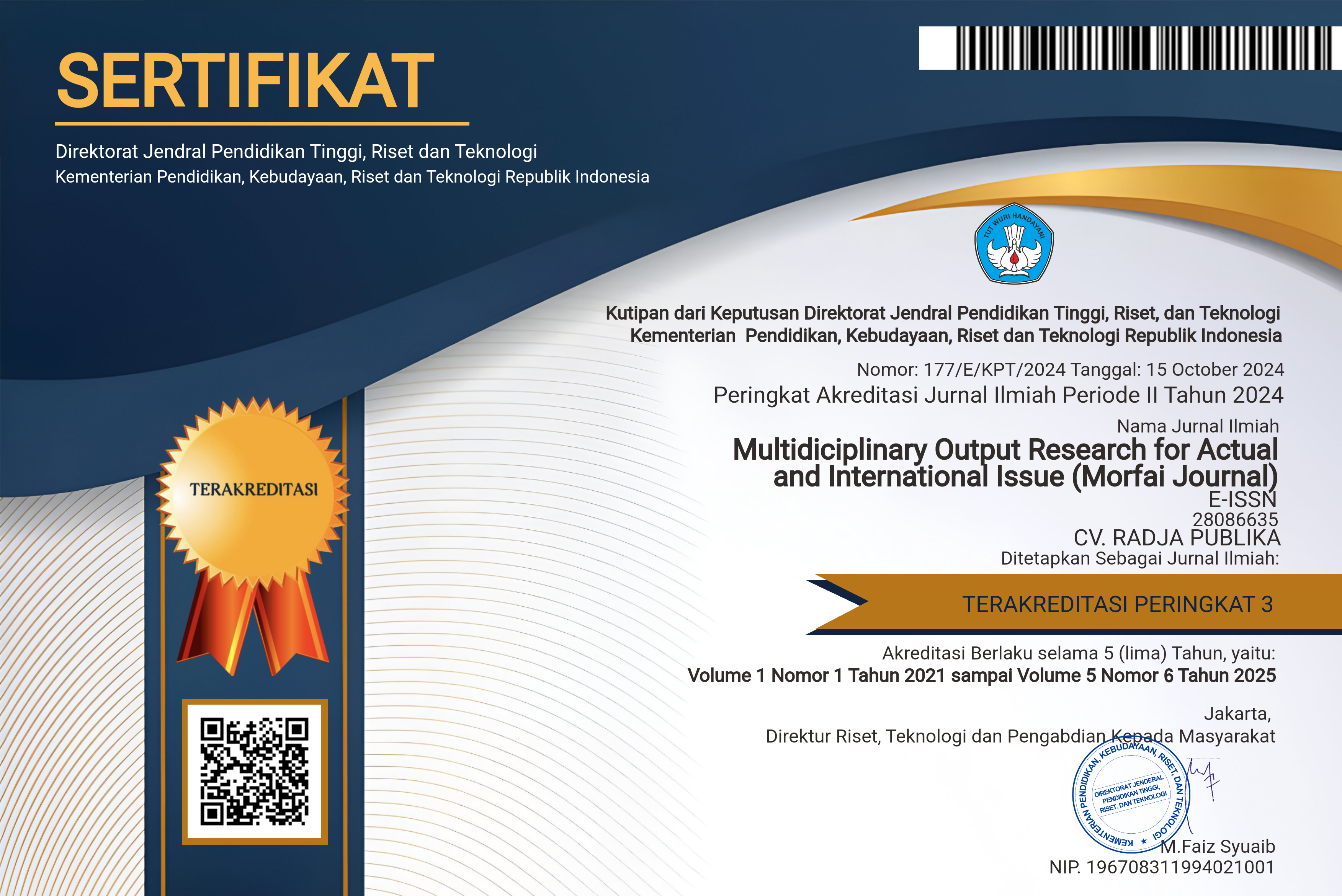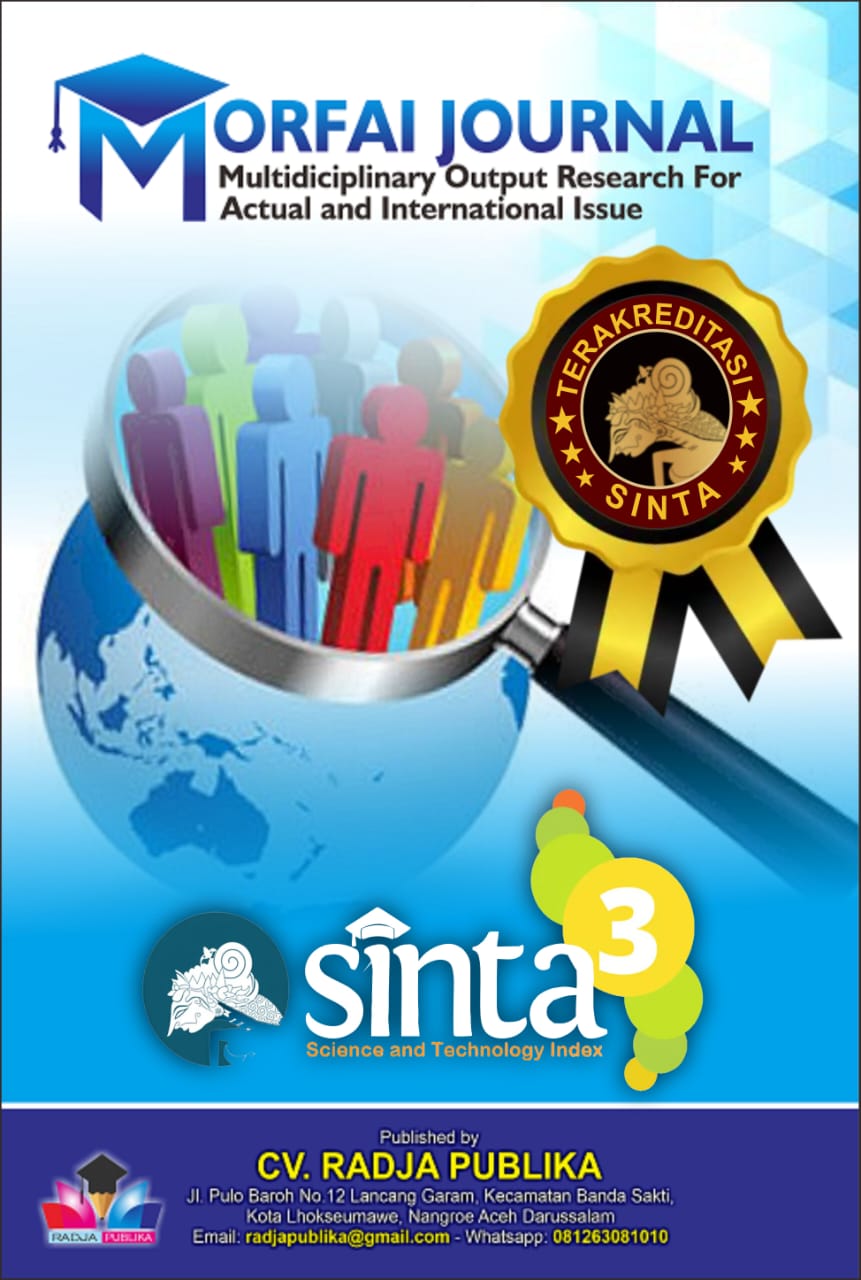ENVIRONMENTAL PERFORMANCE: THE CONTRIBUTION OF GREEN INTELLECTUAL CAPITAL AND ENVIRONMENTAL AWARENESS OF MANUFACTURING MSME BUSINESS
Main Article Content
Farhan Adam
Abdul Kahar
Sugianto
Mustamin
This study aims to examine and test the components of Green Intellectual Capital on Environmental Performance by looking at the role of Business Owners' Environmental Awareness in Moderating this relationship in MSMEs located in disaster affected areas of Palu, Sigi and Donggala (PASIGALA18). A quantitative research method was applied by distributing questionnaires to 60 business owners in the manufacturing MSME sector in the PASIGALA18 area and applying Moderated Regression Analysis using SPSS 27. The research findings reveal that the Green Intellectual Capital component contributes to Environmental Performance in the form of Green Human Capital (β1 = 0.604, p-value <0.001); Green Structural Capital (β2 = 0.252, p-value 0.012); and Green Relational Capital (β3 = 0.411, p-value 0.001). Meanwhile, Environmental Awareness shows a high explanatory power of the model. The role of environmental awareness strengthens all contributions of the Green Intellectual Capital component to the Environmental Performance of MSME actors. The findings indicate that investment in green knowledge, systems, and networks supported by increased business owner awareness significantly improves the environmental performance of MSMEs. The research has implications for local government policy recommendations to improve training programs for MSME actors to integrate Green Intellectual Capital and strengthen environmental awareness in achieving sustainable environmentally friendly production practices.
Aggarwal, P., & Agarwala, T. (2023). Relationship of green human resource management with environmental performance: mediating effect of green organizational culture. Benchmarking: An International Journal, 30(7), 2351–2376. https://doi.org/10.1108/BIJ-08-2021-0474
Ahmad, N., Khan, W., Elahi, A. R., & Haris, M. (2025). Integrating intellectual capital and sustainable leadership to strengthen green business innovation and sustainability of SMEs. Journal of Enterprise Information Management, 1–33. https://doi.org/ 10.1108/JEIM-03-2025-0193
Antwi-Boateng, C., Asumah, S., Kumi, E., & Ansu-Mensah, P. (2025). Examining the triple impact of eco-intellectual capital on the financial, social and environmental sustainability performance of SMEs in emerging economies. Journal of Tropical Futures, 2(1), 10–25. https://doi.org/ 10.1177/27538931241288959
Diao, Y., & Li, F. (2014). Dynamic Capabilities Theory Review. Modern Business, 30, 160–162. 10.14097/j.cnki.5392/2014.30.239
Gidage, M., & Bhide, S. (2025a). ESG Performance and Green Innovation Nexus: Insights From Indian Manufacturing Titans. Business Strategy and the Environment. https://doi.org/ 10.1002/bse.70041
Gidage, M., & Bhide, S. (2025b). Exploring the nexus between intellectual capital, green innovation, sustainability and financial performance in creative industry MSMEs. Journal of Enterprising Communities: People and Places in the Global Economy, 19(3), 457–484. https://doi.org/10.1108/JEC-07-2024-0134
Hariyono, A., & Narsa, I. M. (2024). The value of intellectual capital in improving MSMEs’ competitiveness, financial performance, and business sustainability. Cogent Economics & Finance, 12(1), 2325834. https://doi.org/10.1080/23322039.2024.2325834
Hoang Thanh, N., & Truong Cong, B. (2024). Investigating the mediating role of green performance measurement systems in the nexus between green intellectual capital and environmental performance. Social Responsibility Journal, 20(10), 2237–2258. https://doi.org/10.1108/SRJ-11-2023-0663
KLHK. (2023). Laporan Kinerja KLHK 2023. Laporan Kinerja Ditjen Tanaman Pangan Tahun 2022, 229. https://tanamanpangan.pertanian.go.id/assets/front/uploads/document/LAKIN DJTP 2022_UPDATE ATAP (2).pdf
Kumar, J., Rani, V., Rani, M., & Rani, G. (2025). Linking green intellectual capital and firm performance through green innovation and environmental performance in small and medium-sized enterprises. Journal of Intellectual Capital, 26(3), 670–690. https://doi.org/10.1108/JIC-10-2024-0345
Mansoor, A., Jahan, S., & Riaz, M. (2021). Does green intellectual capital spur corporate environmental performance through green workforce? Journal of Intellectual Capital, 22(5), 823–839. https://doi.org/10.1108/JIC-06-2020-0181
Mohammad, R. (2024). DLH Palu: Sebanyak 4.700 kg sampah plastik dijual hasil gerakan pilah sampah. Antara Sulteng. https://sulteng.antaranews.com/berita/298071/dlh-palu-sebanyak-4700-kg-sampah-plastik-dijual-hasil-gerakan-pilah-sampah#:~:text=Menurut data DLH Kota Palu,menunjang pembangunan daerah%2C%22 katanya.&text=Dilarang keras mengambil konten%2C melakukan,tertul
Palu, W. K. (2021). Peraturan Wali Kota Palu No 40 Pebatasan Penggunaan Kemasan Plastik Sekali Pakai dan Styrofoam.
Paranoan, S., Yusuf, R. M., & Yamin, N. Y. (2025). Accounting Reality Behind Waste Scales. Jati: Jurnal Akuntansi Terapan Indonesia. https://doi.org/10.18196/jati.v8i1.24902
Perano, M., Aisha, R., Channa, N. A., & Casali, G. L. (2025). The nexus between green HRM and environmental performance for sustainable business excellence: the role of employees’ environmental passion and pro-environmental behavior. Total Quality Management & Business Excellence, 36(1–2), 1–25. https://doi.org/10.1080/14783363.2024.2430258
Peraturan Daerah Kota Palu Nomor 3. (2016). Perda 3 tahun 2016_ Pengelolaan Sampah. 6.
Romadhon, F., Fitri, A., & Sari, I. W. (2025). Green Intellectual Capital and Sustainable Performance: The Role of Green Competitive Advantage and Green Innovation. Jurnal Reviu Akuntansi Dan Keuangan, 15(1). https://ejournal.umm.ac.id/index.php/jrak/article/view/36989
Sarwar, A., & Mustafa, A. (2024). Analysing the impact of green intellectual capital on environmental performance: the mediating role of green training and development. Technology Analysis & Strategic Management, 36(11), 3357–3370. https://doi.org/10.1080/09537325.2023.2209205
Shah, S. M. M., Ahmed, U., Ismail, A. I., & Mozammel, S. (2021). Going intellectually green: Exploring the nexus between green intellectual capital, environmental responsibility, and environmental concern towards environmental performance. Sustainability (Switzerland), 13(11). https://doi.org/10.3390/su13116257
Shahbaz, M. H., Ahmad, S., & Malik, S. A. (2025). Green intellectual capital heading towards green innovation and environmental performance: assessing the moderating effect of green creativity in SMEs of Pakistan. International Journal of Innovation Science, 17(3), 683–704. https://doi.org/10.1108/IJIS-08-2023-0169
Srouji, A. F., Hamdallah, M. E., Moustaphe, K. S., & Elamer, A. A. (2025). The role of green intellectual capital and corporate social responsibility in driving environmental sustainability performance: evidence from emerging markets. Journal of Financial Reporting and Accounting. https://doi.org/10.1108/JFRA-11-2024-0882
Teece, D. J., Pisano, G., & Shuen, A. (1997). Dynamic capabilities and strategic management. Strategic Management Journal, 18(7), 509–533. https://doi.org/10.1002/(SICI)1097-0266(199708)18:7<509::AID-SMJ882>3.0.CO;2-Z
Teece, D. J., Pisano, G., & Shuen, A. (2009). Dynamic capabilities and strategic management. Knowledge and Strategy, 18(April 1991), 77–116. https://doi.org/10.4337/9781035334995.00014
Yusliza, M. Y., Yong, J. Y., Tanveer, M. I., Ramayah, T., Faezah, J. N., & Muhammad, Z. (2020). A structural model of the impact of green intellectual capital on sustainable performance. Journal of Cleaner Production, 249, 119334. https://doi.org/10.1016/j.jclepro.2019.119334
Yusoff, Y. M., Omar, M. K., Zaman, M. D. K., & Samad, S. (2019). Do all elements of green intellectual capital contribute toward business sustainability? Evidence from the Malaysian context using the Partial Least Squares method. Journal of Cleaner Production, 234, 626–637. https://doi.org/10.1016/j.jclepro.2019.06.153
Yusuf, R. M. (2025). National Circular Economic Movement (GESN) Towards Sustainable Development (SDGs) 2030: A Netnography Study. JIBEMA: Jurnal Ilmu Bisnis, Ekonomi, Manajemen, Dan Akuntansi, 2(4), 283–289. https://doi.org/10.62421/jibema.v2i4.129









